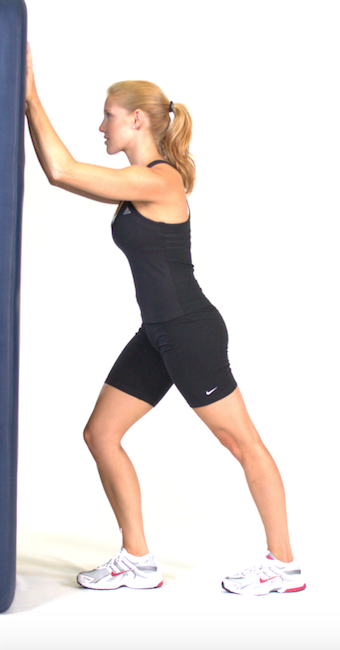Turning back the clock isn't just about wrinkles and fine lines. It's about staying fit -- not just looking it -- and keeping your body moving.
"A sedentary person hits peak muscle mass at age 20 and it starts declining from there," National Academy of Sports Medicine master trainer Rich Fahmy told The Huffington Post. "If you are active, however, populations as old as 60 have been able to maintain their muscle mass. Activity makes a difference."
We spoke with Fahmy, who has 16 years of experience as a personal trainer, and Barbara Bushman, a professor of kinesiology at Missouri State University, about the best ways to keep your body "young" as you age.
1. Focus on the major muscle groups.
"Larger muscle groups ... you see a decline in these faster," Fahmy says.
These are the muscles you use for basic motions like pulling, pushing and squatting.
Bushman says resistance training is important throughout your life, whether you're young or older. "Older adults who engage tend to have higher muscle mass and are stronger and leaner than their sedentary peers," Bushman said. "It's like win-win-win when we start looking at the exercise side of the picture."
A squatting exercise is what Fahmy recommends, bearing in mind your own personal fitness level. Any fitness regimen should begin with a baseline health and fitness assessment by a professional to prevent injuries. Also, you can use this online tool to help find an exercise program that's safe for you.
The good thing about squatting is that there are several variations depending on your fitness level. If falls are a concern, you can use a banister or rail at home to help stabilize yourself, he says. If you're more advanced, you can even add some weight, once you're comfortable. Aim to do some kind of resistance training, even just body-weight exercises, on two non-consecutive days per week, with sets of 10-15 reps. Learn more about proper squat technique here.
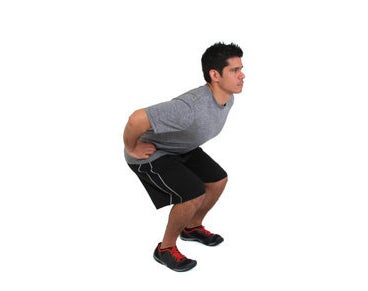
2. Keep it simple.
Brisk walking or swimming a few times a week can reap major benefits. The great thing about walking is that it can be done nearly anywhere and is a good pick for anyone worried about their fitness.
Swimming also provides a good full-body workout, as it offers some resistance, with low impact.
Having an enjoyable workout that you'll stick to and make part of your weekly routine is more important than doing overly-sophisticated exercises, Fahmy says.
3. Focus on balance.
Falls are a major concern for adults over 65, and can lead to broken bones or head trauma. "One day you might notice you're more unsteady or you don’t catch yourself as well as you used to," which is a scary prospect, Fahmy says.
There are a couple of exercises which can help you work on your balance. As with any exercise, it's important you're aware of your surroundings (things like equipment you could trip over at the gym) and your fitness level before you begin. Make sure you hold on to something to support yourself if you're concerned about falls.
One suggestion is the single-leg balance and reach. You can read more about it here. But for a simpler modification, Fahmy says it's as easy as learning to shift your weight from one leg to the other and then slowly being able to balance on only one leg.
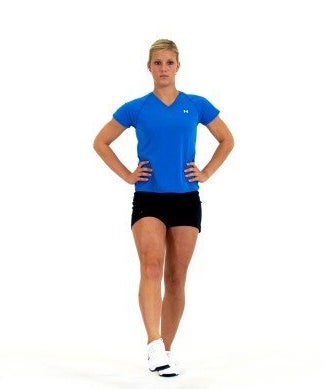
4. Work on your back and core.
While we might be more concerned about a flabby midsection or with our aesthetic appeal, Fahmy says it's our spinal stabilizers that often decline without us noticing. "It's part of your inner musculature that keeps your spine in line ... the little balancing muscles designed to keep you upright, that start going if you're sedentary."
An exercise he recommends to strengthen them is the quadruped opposite arm-leg raise. You basically start at "tabletop position" on all fours, with a straight back. You then slowly extend one arm and the opposite leg, at the same time, to help focus on your coordination and strength. You can learn more about proper technique here.
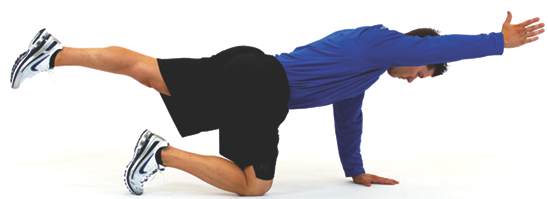
5. Stretch it out.
Flexibility should be at the core of any exercise program, the experts say. "Because of the habits we've built over the years, the body gets good at what you repeatedly do," Fahmy says. This is important to focus on, especially if you have, and have had, a sedentary lifestyle or sit at a desk all day.
Bushman says it's important to include stretching at least two days a week and make sure you hold each stretch from 30 to 60 seconds.
The static pectoral stretch for your upper body and chest is recommended. You can learn more about proper technique here.
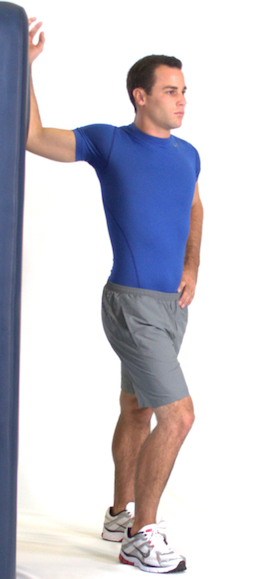
Another great stretch is the calf stretch, which can help prevent injuries to the lower body. You can learn about the proper technique here.
